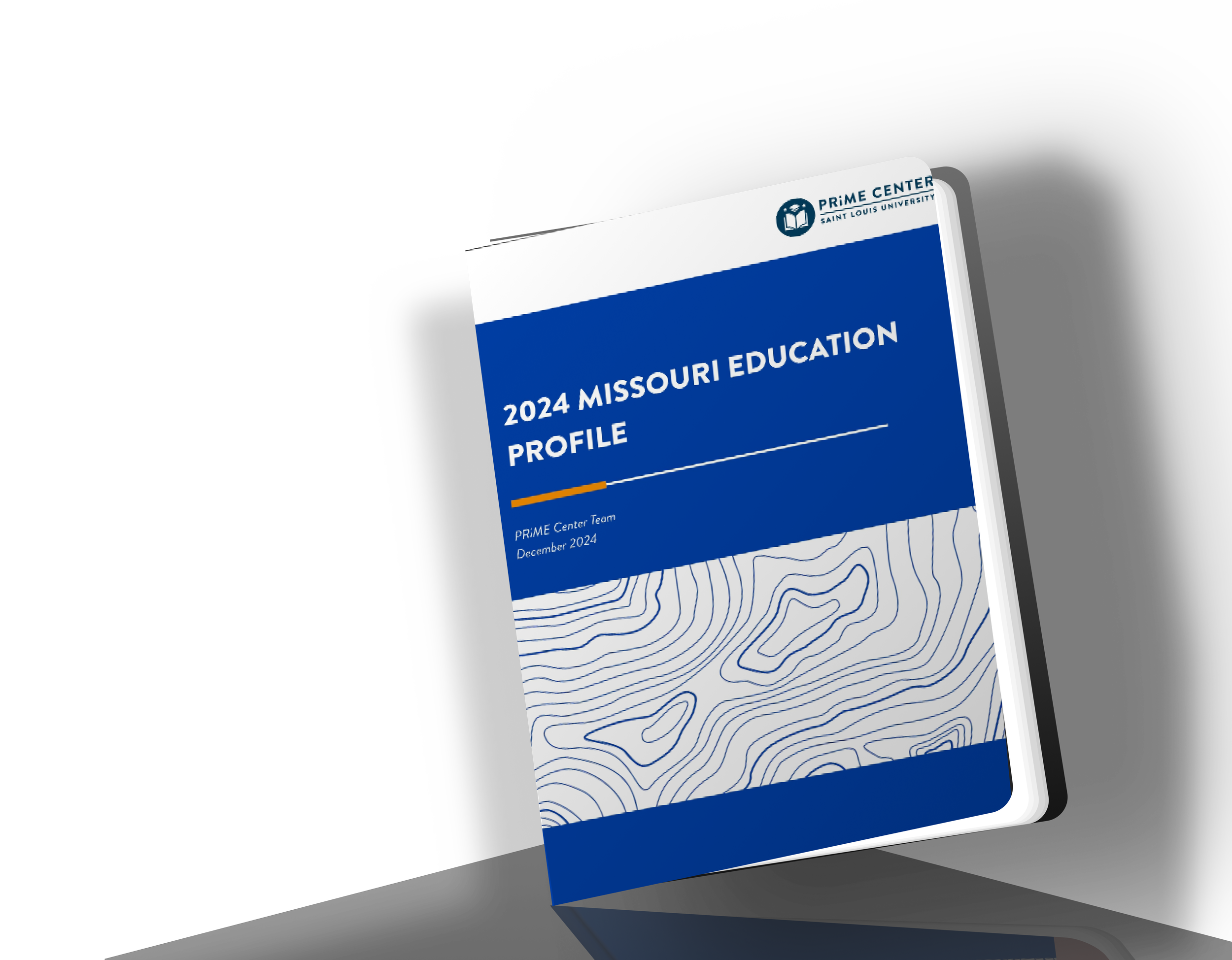
BETTER EVIDENCE, BETTER POLICIES, BETTER SCHOOLS.
The Policy Research in Missouri Education (PRiME) Center is a non-partisan research center housed in the Saint Louis University School of Education. Opened in the Spring of 2019, we are wholly committed to conducting and sharing research that leads to better policies, educational outcomes, and opportunities for all students.

The newest data from the Department of Elementary and Secondary Education finds that more than one in five K–12 students were chronically absent in the 2023–24 school year. From 2019 to 2024, nearly 91% of Missouri districts (499 total) have experienced a rise in chronic absenteeism—defined as missing at least ten percent of scheduled school days. Here, we explore key trends from the most recent Missouri attendance data.
A comprehensive look at public school enrollment in Missouri, the Kansas City Metro Area and the St. Louis Metro Area.
PRiME Center’s recent report highlights the Missouri schools serving students from low income households that are producing large gains in reading and math.
This 4th Edition of PRiME’s annual Missouri Statewide Growth Report covers data from the 2022-23 and 2023-24 school years.
The St. Louis Teaching Fellows (STL TF) program at Saint Louis University (SLU) continues to place teachers in St. Louis area public and charter schools by providing a route to teach while simultaneously earning teaching certification and a Master of Arts in Teaching (MAT) degree. The impact has grown to two active cohorts (24 students) and three classes of graduates (36 students).
This report sheds light on the relationship between four-day school weeks and attendance in Missouri and Arkansas schools.
There are over one million school-age children in Missouri, and we estimate 61,000 (6% of all school-age children) are homeschooled. Missouri is one of 29 states that does not require homeschooling to be reported. Using methods that can be replicated elsewhere with publicly available data, we test three approaches to estimating homeschool participation: using American Community Survey (ACS) data; subtracting public and estimated private school counts from ACS school-age totals; and polling parents. We comment on the usefulness and limitations of each approach and provide a model for researchers seeking to estimate homeschooling trends in states that lack administrative data.
This report examines the unique challenges to and opportunities for school belonging for students in special education, along with best practices to support school belonging for special education students.
This report details Missouri teachers’ supplemental (non-base) pay and the Career Ladder program for teachers.
Currently, over a third of public school districts in Missouri utilize a four-day school week (4DSW). The overwhelming majority that currently use a shortened school week are small, rural school districts. The primary reason cited by districts for transitioning to the 4DSW is to recruit and retain certified educators in an increasingly competitive workforce marketplace. While, up to this point, the four-day school week has been a rural school district phenomenon, this is beginning to change as larger districts also struggle to find and retain staff. This study examined the 4DSW influence on job applications to the Independent School District (ISD), which adopted a four-day school week for the 2023-2024 school year. With over 14,000 students and over 1,200 certified staff, ISD is by far the largest 4DSW district in Missouri. As policymakers analyze the 4DSW, it is important to investigate how the size and diversity of a school impact a school district's ability to attract and retain teachers.
In this report, we analyze the results of a survey sent to 900 Missouri and Arkansas parents, asking them their opinions about four-day school weeks, homeschooling, college likelihood, teacher salaries and entering the workforce, and school vouchers.
In this report, we dive into the results, focusing specifically on the education questions posed to voters on the Fall 2024 SLU/YouGov poll.
This brief documents changes in Missouri public school teacher retention during the COVID-19 pandemic and examines changes in teacher retention in districts that adopt a four-day school week calendar.
This 3rd Edition of PRiME’s annual Growth Reports covers data from the 2021—2022 school year.
This 3rd Edition of PRiME’s annual Beating the Odds Growth Report covers data from the 2021—2022 school year.
In this education report we first provide some key background information regarding student mobility and its impact. We then use public data to describe what student mobility looks like across Missouri in comparison to neighboring states. Next, we call attention to the discrepancies in existing Missouri student mobility data and describe possible reasons for these discrepancies. We conclude with implications for education researchers and policy makers.
Since 2020, Saint Louis University (SLU) has worked with YouGov to poll Missouri citizens on current issues in politics and education. The PRiME Center funded a poll presented to 900 likely Missouri voters from February 14–February 26, 2024 to inform stakeholders on public opinion surrounding political and education-related policy issues. In this report, we dive into the most recent education results.
The following paper reports on variation in student demographics and outcomes in St. Louis’ public school system.
The following paper provides a primer in state education funding formulas, and a lesson in unintended consequences.
In this report, we define the problem of chronic absenteeism in Missouri and present data on school attendance in the state over the last five years.
In this report, we show how Missouri teacher salaries were reduced following the Great Recession.
In this report, we analyze changes in school-age population, public school enrollment, and school closures in Saint Louis City over the last three decades.
The PRiME Center partnered with Navigate STL Schools to determine data priorities that align with parent needs. To meet this objective, we sat down with 28 parents in a series of focus groups to learn more about how parents make informed school decisions.
The PRiME Center worked with YouGov to distribute a survey about various education topics to a sample of 600 Missouri parents of school-aged children. We summarize their perspectives in this report.
The 2022 Missouri Student Growth Report by Modality of Instruction highlights the top-growth schools according to mode of instruction on the first day of school in fall 2020. We highlight the schools achieving top student growth within the three most common modes of instruction during the 2020-21 school year—in-person, hybrid, and distanced instruction and rank the top schools in student growth in three categories—elementary schools, eleMiddle schools and middle schools—for both English Language Arts (ELA) and math. This report is the third in the 2022 series of Growth Reports that examine growth scores on the MAP within the context of the COVID-19 pandemic.
The 2022 Beating the Odds Report: Student Growth in Missouri’s Highest Poverty Schools highlights the top schools that are “beating the odds” across the state by moving the needle on student learning while serving high concentrations of low-income students. We rank the top schools “beating the odds” in student growth in three categories—elementary schools, eleMiddle schools and middle schools—for both English Language Arts (ELA) and math. This report is the second in the 2022 series of Growth Reports that examine growth scores on the MAP within the context of the COVID-19 pandemic.

RECENT PUBLICATIONS
Since 2020, SLU has partnered with YouGov to poll Missouri likely voters on relevant political and education-related issues. In this brief, we dive into the results, focusing specifically on the education questions posed to voters in the Spring 2025 iteration of the survey.
Districts, states, and the federal government are investing in the community school strategy as a promising school improvement project to holistically support student development (Dryfoos, 2002). Educators and researchers alike are recognizing the need to support students and their families to promote meaningful experiences in school. Here, we investigate the history of St. Louis-area community schools.
Every state tracks student growth, using statistical models that estimate annual student level growth in tested subjects. Different states use different models and methods. This policy brief examines the types of student growth models across U.S. states, focusing on their methodologies, transparency, and implications for educational equity. Growth models such as Student Growth Percentiles (SGP), Growth to Proficiency Models, and Value-Added Models (VAM) provide critical insights into student progress and inform accountability measures. This is the first, national, publicly-available data set of the student growth models used in each state. Analysis reveals a widespread reliance on SGPs and similar frameworks, with some states incorporating demographic controls to address equity concerns.
The PRiME Center’s Executive Director, Dr. Collin Hitt, breaks down the Missouri Growth Model and answers frequently asked questions about Growth Scores.
The PRiME Center at Saint Louis University and the Office of Education Policy at the University of Arkansas commissioned YouGov to survey 900 Missouri and Arkansas parents of school-aged children to find out what they think about the education issues facing their communities. The poll was administered from May 16 to June 3, 2024. This full report with citations can be found on PRiME’s website HERE. In the following slide deck, we summarize only the Missouri parents’ responses (n = 450).
Scores on the Missouri MAP test are effectively flat from 2023 to 2024. Math scores have mostly returned to pre-pandemic levels. ELA scores have yet to recover, especially at the early grades, which remain at 2021 levels. This reflects a larger trend of declining early literacy rates.
This brief is a PRiME Center rapid analysis, released the same day as the Missouri MAP score results.
In this report, we bring together multiple publicly-available datasets and examine trends in public and non-public school enrollment over the past 16 years.
This brief examines trends in the types of reported disciplinary incidents in K–12 Missouri schools and analyzes demographic trends in the assignment of out-of-school suspensions.
In this brief, our partners at Saint Louis Research Practice Collaborative analyze student mobility in Saint Louis schools.
In this brief, we highlight poll results on public opinion regarding charter school expansion.
In this brief, we analyze the rapidly changing high school landscape in Saint Louis between 2011-2023.
In this brief, we analyze the newly released state test scores alongside national test score trends over the last five years.
In this brief, we explore the relationship between four-day school week policies and teacher shortages in Missouri.
In this brief, we analyze how varying school district leave benefits might affect the Missouri teacher pipeline - especially among early career female teachers.
In this brief, our partners at Saint Louis Research Practice Collaborative analyze student mobility in Saint Louis schools.
In this brief, we analyze variation in charter and magnet schools based on their curriculum, pedagogy, and student body focus. This is a first-of-its-kind analysis for Missouri.
In this policy brief, we describe Missouri’s current open enrollment policy and outline a current proposal, House Bill 253, being considered to further increase students’ ability to transfer to schools located in other districts. We also discuss key elements of interdistrict open enrollment policies that must be considered in policy design to ensure all students and schools benefit.
In this policy brief, we build on our previous brief, Missouri's School Accountability System, and take a deeper dive into two specific components of school accountability systems—school rating systems and accountability indicator weights. We discuss the weight of academic growth within performance indicators at the elementary and middle school level and consider the proposed changes to these areas under SB 341 and HB 558. We add evidence by examining school accountability systems in states with high growth and conclude by providing policy recommendations based on our findings.
In this policy brief, we describe Missouri’s current accountability system for traditional public and public charter schools—Missouri School Improvement Plan (MSIP) 6—and how it differs from the prior version known as MSIP 5. We add context by detailing federal school accountability system requirements under the Every Student Succeeds Act (ESSA), which also impacts the work of schools in Missouri.
UPDATED: In this brief, we examine the relationship between changes in the elementary age population in St. Louis City, school closures, school choice, and access to public elementary school options across the city.
This brief examines Missouri’s 2022 NAEP results, which are the first look into NAEP performance after the pandemic. We focus on Missouri’s performance changes over time, gaps between student groups, and comparison to national trends.
This brief considers the demand and supply sides of private school choice in Missouri and how the opinions of voters, parents, and private school leaders diverge on the MOScholars Program.
This brief describes Missouri’s approach to reach its “Big Goal” to have 60% of its working-age adults attain a postsecondary certificate or degree by 2025.
This brief highlight trends from the the National Assessment of Educational Progress (NAEP) Long-Term Trend (LTT) results, which exclusively sampled a nationally-representative group of 9-year-old students and was intended to measure achievement changes during the pandemic in mathematics and reading. To contextualize, we examine the trends in MAP test scores for Missouri's 4th graders (typically 9-year-old students).
UPDATED: This brief examines changes to enrollment in schools under the Archdiocese of St. Louis, describing research on enrollment changes over the last ten years from the National Catholic Educational Association (NCEA) and using data from the Private School Universe Survey (PSS) from the U.S. Department of Education over the last 20 years. We describe trends in St. Louis and other major archdioceses and conclude with highlights of the current strategic planning processes for the Archdiocese of St. Louis and other large archdioceses
This brief examines the state’s minimum teacher salary and the new proposed plan to increase the state’s minimum salary. Specifically, we examine the Governor’s proposal to increase from $25,000 to $38,000.
In this brief, we describe Missouri’s certification reciprocity policy, alternative pathways to certification, and potential “blocks” in the pipeline due to salary.
In this brief, we describe the changes to Missouri’s public school enrollment prior to and after the COVID-19-induced shutdown of 2020. We pay particular attention to the changes in enrollment by grade level and regionally, as well as putting Missouri’s changes in context with national statistics.
In this brief, we describe the parts of the state that will have students who are potentially eligible to use the new Missouri Empowerment Scholarship Accounts program. We pay particular attention to those parts of the state that are ineligible due to the program’s geographic and population limitations.


Our 2024 Missouri Education Profile is here.



PRiME for Parents.
Many of our pieces are accompanied by short summaries.

































































In June 2020, Saint Louis University launched the SLU/YouGov poll to provide researchers and policymakers with an assessment of Missouri likely voters’ opinions on relevant political and educational issues. Some questions were asked in multiple polls to monitor trends over time, while others were relevant to potential policy changes that may have impacted the education sector at a given time. Here, we summarize the findings from nine polls conducted from 2020–2025 to identify trends in public opinion on Missouri’s education issues.